13 Thanksgiving Facts To Bring Up at the Table This Year
For most of us, Thanksgiving is a celebration of family, friends, and food; a moment to give a nod to all of the good things in our lives. And yes, to double up on mashed potatoes. But the real history of Thanksgiving is a bit more complicated than Turkey Trots and pumpkin pies—in fact, it has many layers of spectacle, entrepreneurial spirit, economic recovery, and, naturally, feasting. If you've ever found yourself wondering why we celebrate Thanksgiving, or where some of our seemingly obscure Thanksgiving traditions come from, read on.
A woman named Sarah Josepha Hale lobbied Congress for years to make Thanksgiving an official holiday.
If it wasn't for this determined woman, Thanksgiving wouldn't exist today. Hale's allegiance to Thanksgiving began in 1827 and was based in national pride; she hoped to make it “permanently, an American custom and institution.” It wasn't until 1863 that President Lincoln finally declared Thanksgiving a national holiday. Seeing as the President did this in throws of the Civil War, Thanksgiving is considered by some to be an attempt on behalf of the president to bring some peace back to the country.
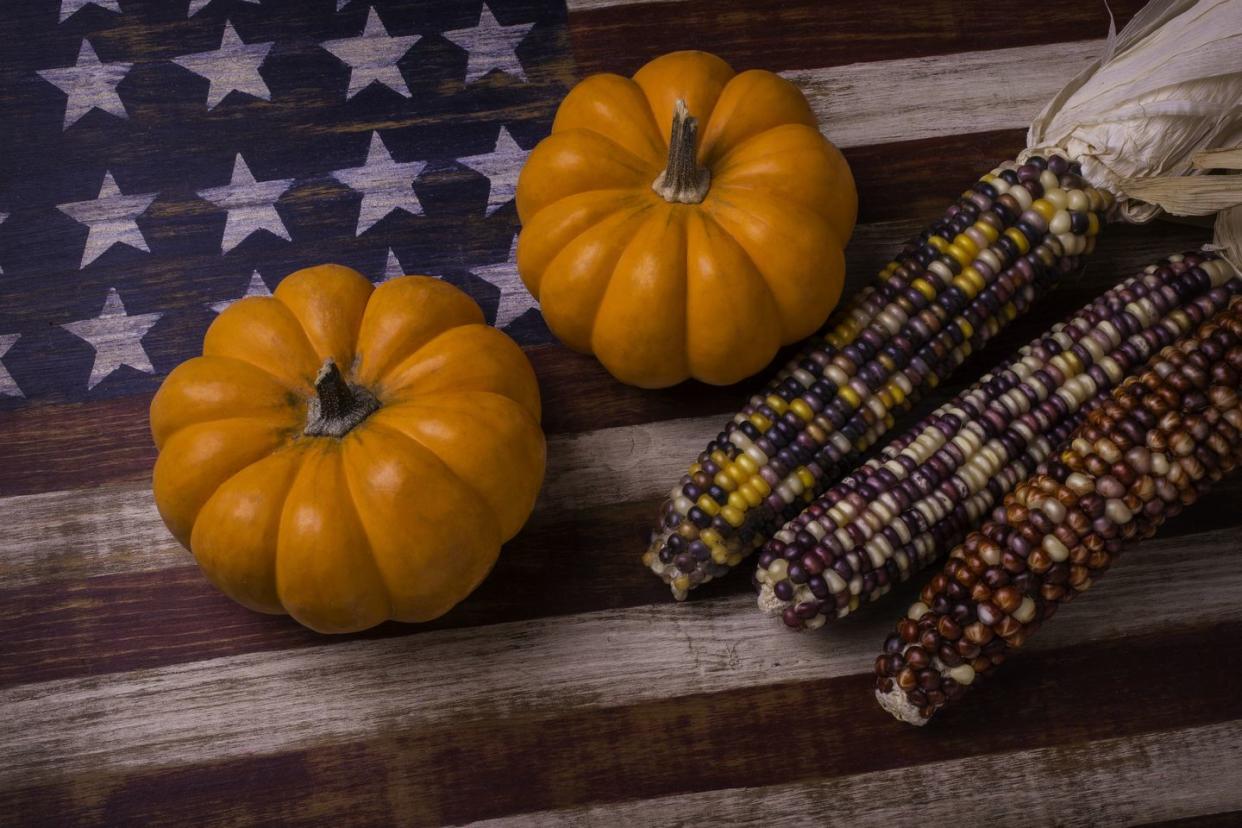
Originally, Thanksgiving may not have been celebrated in November at all.
There isn't clear historical information on the actual date of the first Thanksgiving, but some historians have suggested it may have taken place in mid-October. President Lincoln assigned the holiday to fall on the last Thursday in November, possibly to coincide with the date the Pilgrims first landed the Mayflower in New England.
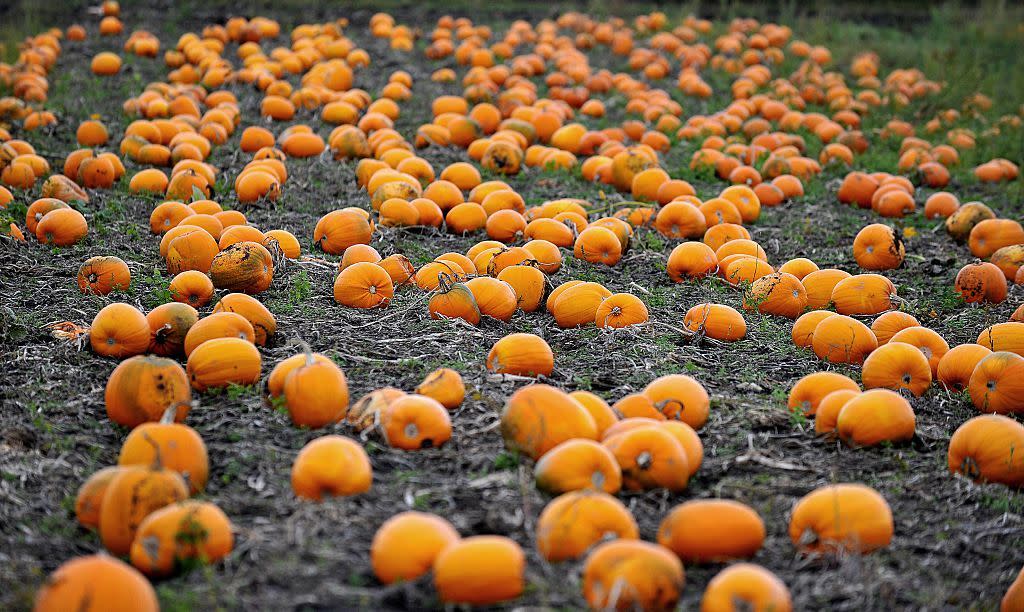
In 1939, President Franklin D. Roosevelt moved Thanksgiving one week earlier.
Roosevelt hoped that a lengthened holiday shopping season would increase spending and alleviate the effects of the Great Depression. This resulted in two consecutive years of conflicting Thanksgiving Day celebrations, as some states refused to recognize the change.
By 1941, FDR gave in and signed a bill making the fourth Thursday in November the official date for Thanksgiving nationwide, regardless of whether it's the last Thursday of the month or not.
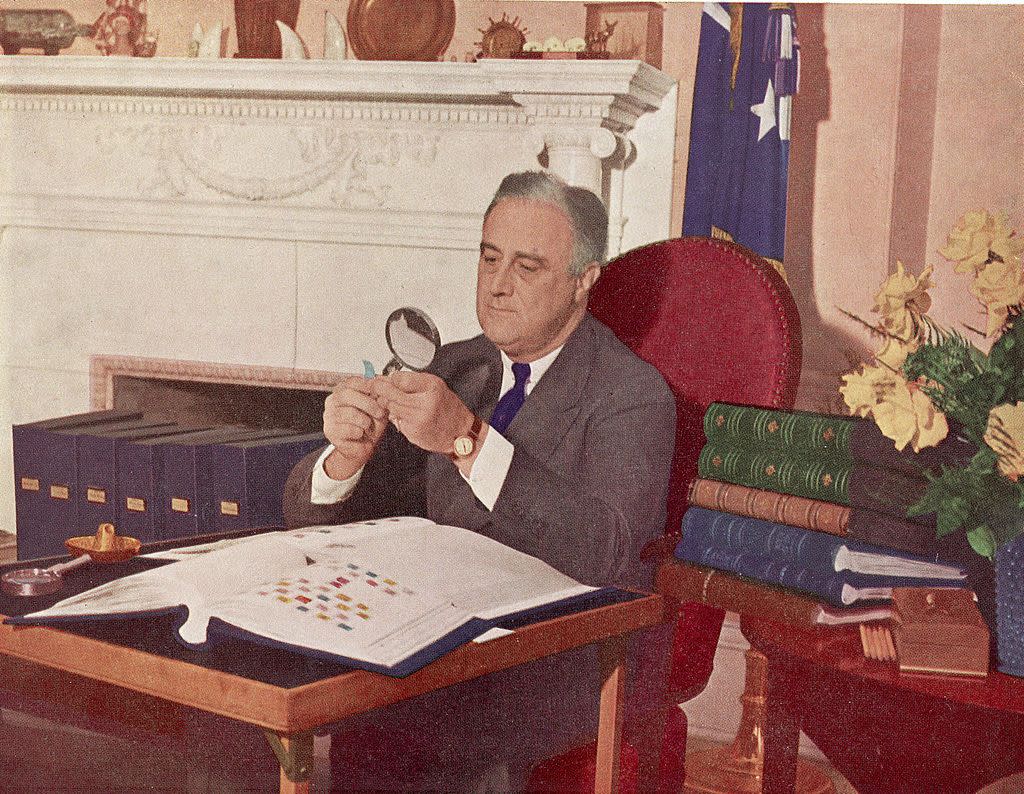
The first Macy’s Thanksgiving Day Parade in 1924 featured animals from the Central Park Zoo.
Though the parade stretched just two blocks, New York City went all out for what newspapers called "a marathon of mirth." Notably, however, there were none of the balloons the parade is known for today. Instead, there were live bears, elephants, camels, and monkeys from the Central Park Zoo. There were also floats with puppets, celebrities, bands, costumed Macy's employees, and of course, Santa Claus.

Thanksgiving leftovers led to the first ever TV dinner.
In 1953, food corporation Swanson overestimated how much turkey would be consumed on Thanksgiving and had to get creative with 260 tons of leftover poultry. Using 5,000 aluminum trays and an assembly line of hand-packers, they created a Thanksgiving-inspired meal with the aforementioned turkey, cornbread dressing, gravy, peas, and sweet potatoes. The dish was sold for a grand total of 98 cents, and in the first full year of production, they sold ten million of them, birthing the prepackaged frozen meal industry.
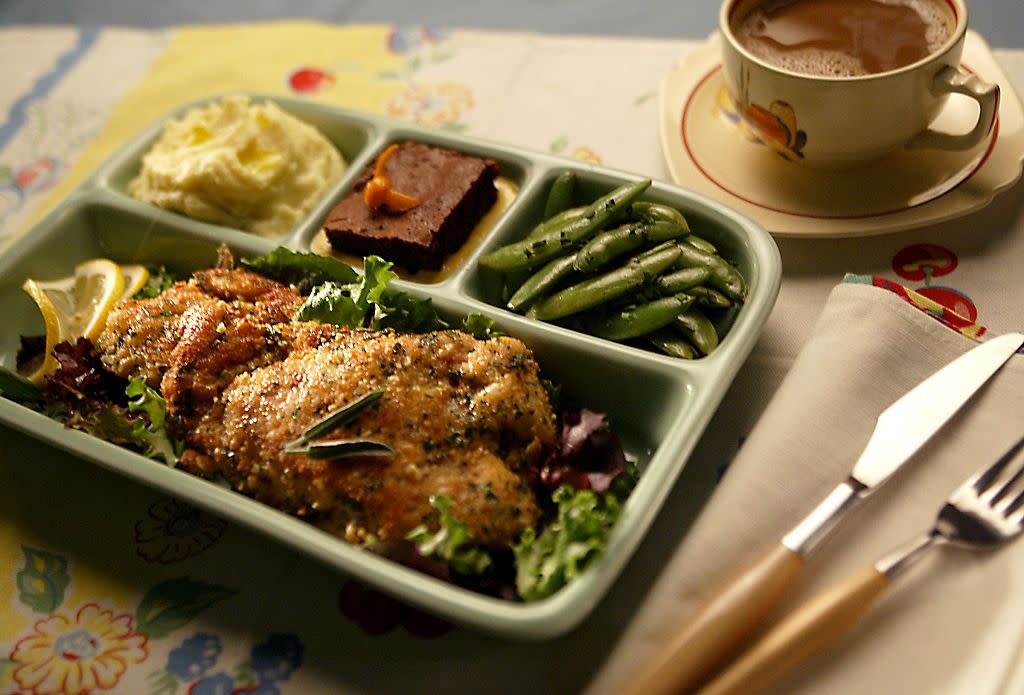
Benjamin Franklin was very pro-turkey.
It wasn't so much that Franklin thought the bird was delicious, but more so that he admired the animal's qualities. Surprisingly, Franklin thought the turkey should be the United States' official bird rather than the bald eagle.
"I wish the bald eagle had not been chosen as the representative of our country; his is a bird of bad moral character," he once wrote. Apparently, Franklin noted that the turkey was a "much more respectable bird."

The menu for the first Thanksgiving in Plymouth in 1621 likely included lobster, seal, and swans.
No, turkey did not RSVP to the first Thanksgiving in 1621. The feast between Pilgrims and the Wampanoag Native Americans lasted for three days, during which both parties contributed to the meal. Though there are few records of the actual menu, it is known that the Pilgrims hunted for local fowl (swans included) and the Wampanoag brought five deer. It's thought that lobster and seal were likely involved, due to their availability in the area.
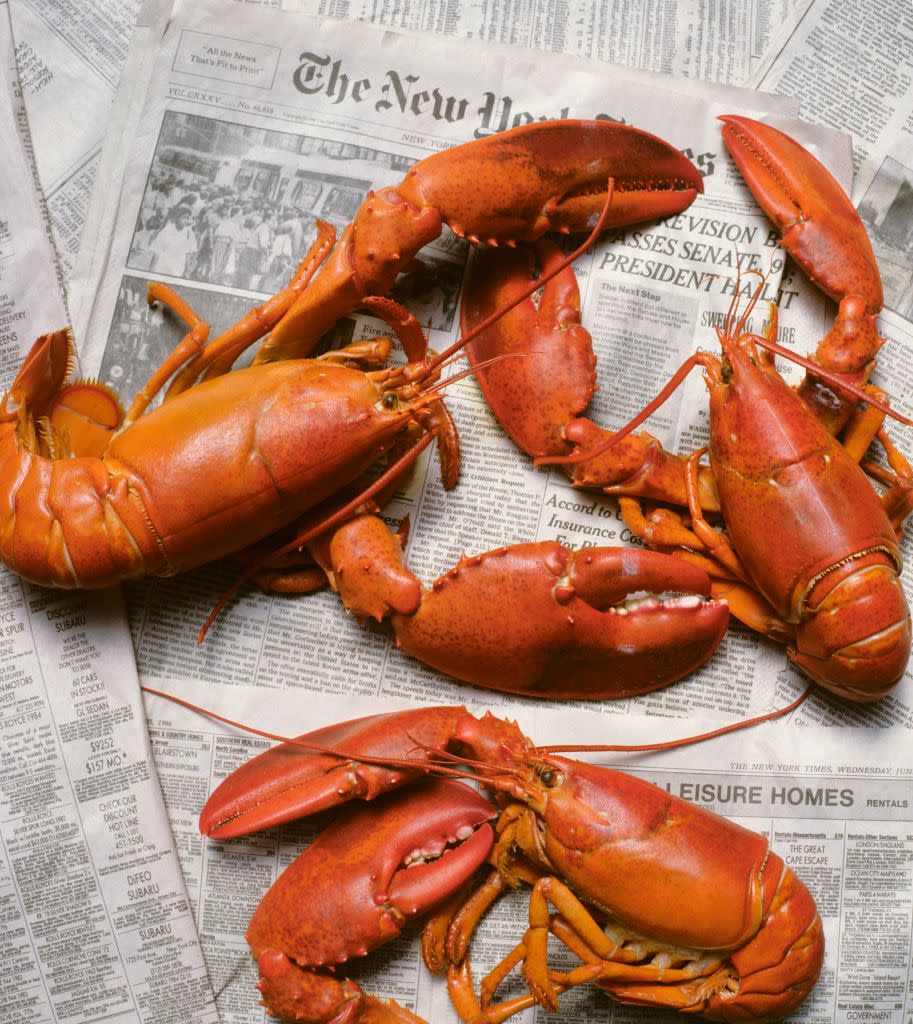
Pumpkin pie has been beloved for a long, long time—although, it isn’t America’s favorite pie.
Records show that people have been cooking up pumpkin pies since the mid-1600s! Pumpkins were likely at the first Thanksgiving, although probably not in pie form. The dessert has been an important part of Thanksgiving meals since the 1700s—one Connecticut town even postponed the holiday in in 1705 due to a molasses shortage that prevented people from making pies. However, The American Pie Council is putting an end to the pumpkin vs. apple pie debate. According to their research, apple pies are America's favorite, with pumpkin coming in second place.

Thanksgiving Day football games began in the 1870s.
Turkey Day football began long before the country could watch the sport on TV. In fact, football wasn't even a professional sport when the Thanksgiving game tradition took hold. In 1876, Yale played Princeton in the first ever Thanksgiving Day football match. At that point, the sport was still evolving from a rugby hybrid into the game we know today. Games stayed on the college and high school level for nearly fifty years. Eventually, when the National Football League was founded in 1920, it began hosting as many as six Thanksgiving matches every year.
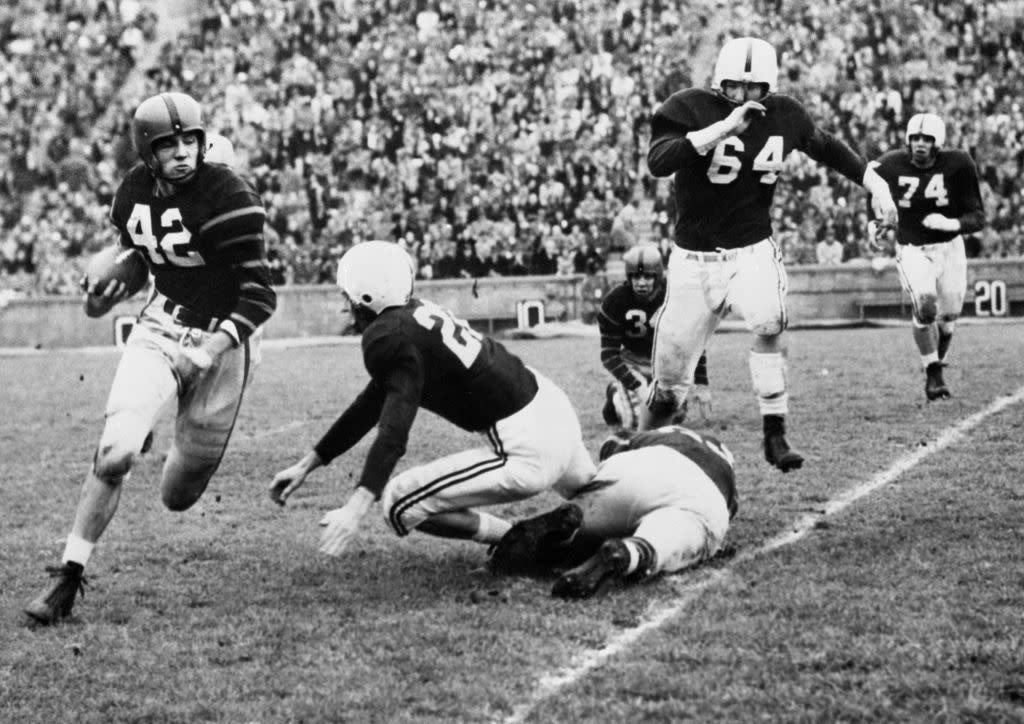
Female turkeys don’t gobble.
We humans gobble down dinner, and our feathered turkey friends just plain gobble, right? Not quite. Only male turkeys make the well-known “gobble, gobble” sound that has come to be associated with the holiday. In fact, male turkeys are even known as “gobblers.” Females make other noises, such as purring and cackling.

The day after Thanksgiving is especially busy for plumbers.
This sounds like the beginning of a crude joke, but it’s true. According, to plumbing company Roto-Rooter, the day after Thanksgiving is “far and away the busiest day of the year.” The company warns to be extra careful with turkey grease, potato peels, rice, and stuffing, as they are sure to clog your drain or overwork your garbage disposal.

There’s a very dark side to the day’s history.
While we take the day to celebrate all that we have and all that this land provides, it’s important to remember that millions of Native Americans died because of European colonization and that life for indigenous people was permanently changed by the arrival of the English. The last Thursday of November is honored by many as a “National Day of Mourning.” Consider taking a moment of reflection this Thanksgiving to recognize that the stories we learned as children weren’t exactly accurate representations of how we came to call this nation home.
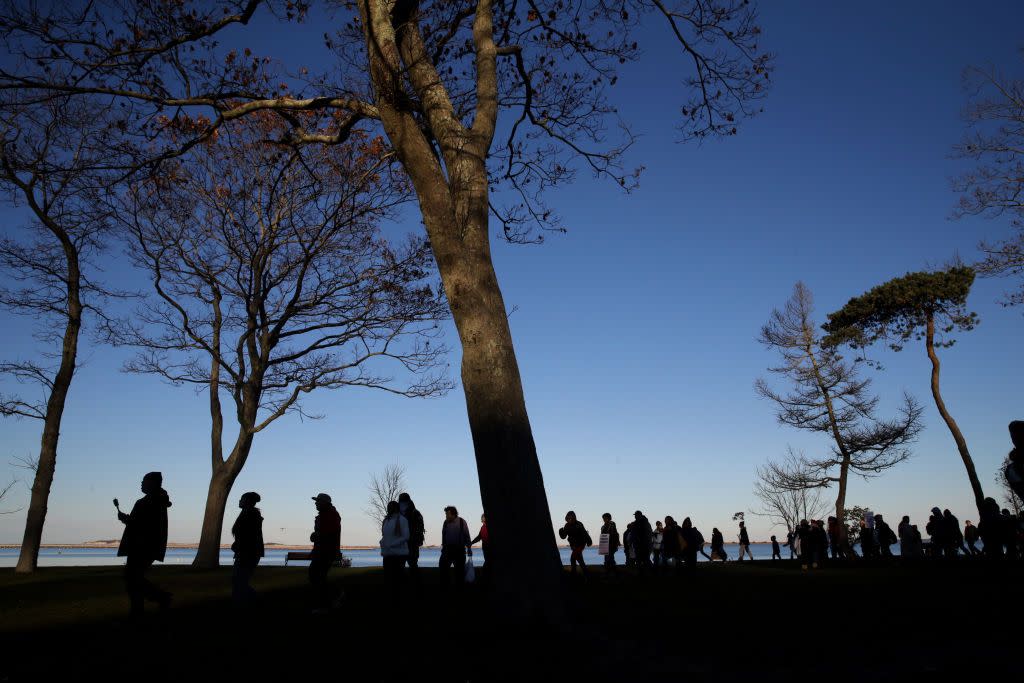
The British don’t officially celebrate Thanksgiving, but they do celebrate "Brits-giving."
Oh yes, it's a real thing. The British increasingly embrace the American tradition to celebrate gratitude and national pride. But it wouldn't be a truly British tribute without their own unique take on the holiday. Hence, the origination of "Brits-giving." Whatever they want to call the compassionate tradition, we're happy to welcome them to our table.
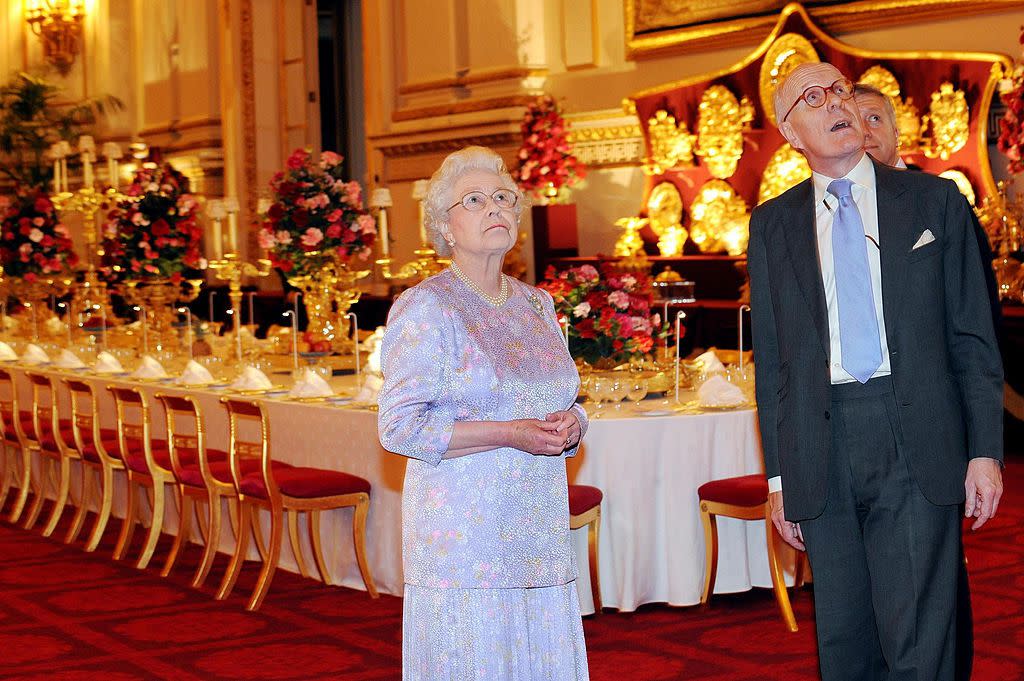
You Might Also Like
